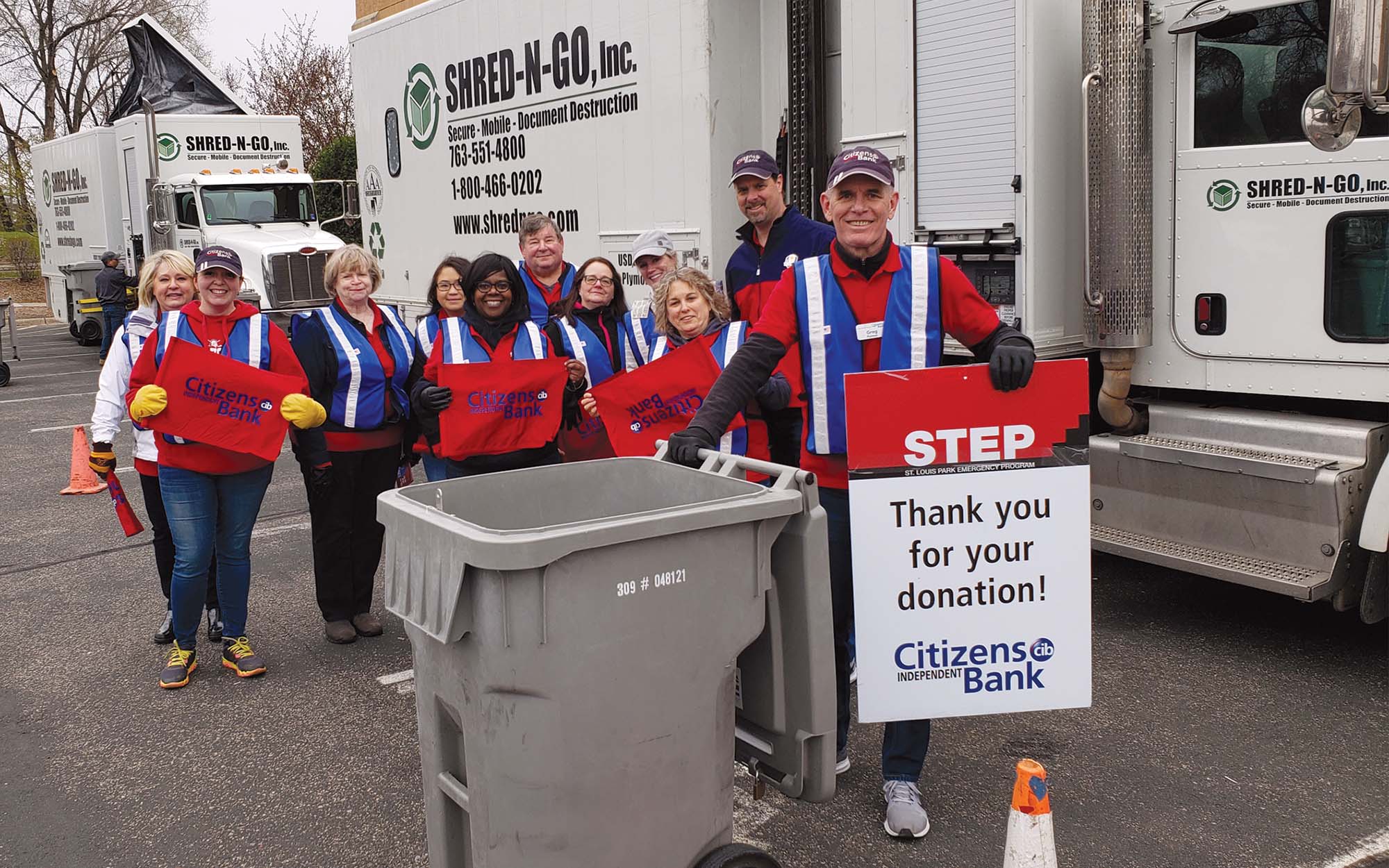There’s no greater component of a community bank’s strategy—or lack thereof—than its budget.
This forward-looking document is more than a list of expenses. It’s a commitment to a vision of the future. A budget only focused on the most mechanic aspects of community banking, such as staffing and overhead costs, indicates a bank that’s locked into the status quo. A budget accounting for innovation, growth and succession planning demonstrates a bank focused on investing in the future. Yet budgeting for these big-picture investments can seem overwhelming. The costs can feel nebulous and impossible to predict. Meanwhile, with different departments and initiatives pushing for a bigger piece of the pie, it can be hard to prioritize the bank’s most pressing needs.
That’s why a strategic plan and board buy-in should always be the very first step when budgeting for any major initiative.
“Get the board of directors to understand the importance of these areas … and, where appropriate, to view these expenditures through the lens of investments, rather than expenses,” says Greyson Tuck, attorney and consultant with community bank consulting and legal firm Gerrish Smith Tuck Consultants and Attorneys in Memphis, Tenn. “We need to avoid just spending money because it’s in vogue to talk about.”
Innovation initiatives included in a bank’s budgets should align with specific goals in its strategic plan, such as improving customer experience. A bank might aim to speed up its application process and improve decision-making time for lending, enter a new business line, mitigate fraud risk or make regulatory compliance more efficient.
Informed planning
A budget meeting is not the time to make those decisions, however. Priorities should be determined as part of the strategic plan. Nor is it a time for guesswork, says Kevin Tweddle, chief operating officer of the ICBA Services Network and a former community bank chief financial officer.
“Don’t just put $100,000 into a bucket for innovation,” he advises. “Tie it to something specific.”
Before budgeting, your community bank should understand what the project might cost, its intended result and the potential return on investment. The board and the bank’s executive officers have to determine how they can most efficiently deploy limited funds, knowing there won’t be the budget to fund everything on the wish list.
“There needs to be meetings leading up to discussions on spending,” says Jason L. Rader, a national industry partner with BKD National Financial Services Group, a division of BKD, LLP, a national CPA and advisory firm. “They need to ask, ‘What do we want to do with our money?’ far ahead of the budgeting process.”
“There needs to be meetings leading up to discussions on spending. They need to ask, ‘What do we want to do with our money?’ far ahead of the budgeting process.”—Jason L. Rader, BKD National Financial Services Group
Uncovering the cost of a project will take legwork. That may mean talking to the community bank’s core provider, vendors or fintech partners about what others have done. It may involve reaching out to peer community banks to get an idea of the costs that go beyond a check written to a vendor, including leadership, talent and technology. There are hard costs with new computers, software and servers, and soft costs like project management, staff training and ongoing maintenance, Tuck says.
It’s common for community banks to not fully understand the expenses of implementing innovation, Tuck warns. For example, a bank may buy a piece of software only to later discover that it requires an upgrade to a server or a new service contract. Failing to innovate due to a fear of collateral expenses can prove more expensive down the road.
“You can’t be afraid to miss a few things. That sometimes ties your hands,” says Michael Bilski, CEO of $538 million-asset North American Banking Company in Roseville, Minn. “You try and get everything planned out and mapped out and, in the end, it may cost a lot more.”
One innovation-related expense community banks consistently underestimate is staffing. Community banks looking to hire technology innovators must compete with deep-pocketed fintechs and larger companies for limited talent, which can result in higher compensation packages and headhunter fees.
In addition, banks with limited vendor management resources need to vet partners, a task that’s especially time consuming when dealing with startups that aren’t publicly traded and don’t have audited financial statements, Tweddle says.
On the flip side, a given innovation might streamline a process that currently requires three full-time employees into one that requires just one. The innovation may also drive income. “Really focus on not only the budget item but on quantifying what it is they are getting in return for that expense,” Tuck says.
That requires drawing on the expertise from areas including operations, IT, executive management and lending, among others, Rader says. “When you’re not getting enough people from different areas and just letting one or two people to decide, you’re not getting the input from others necessary to execute,” he adds.
Budgeting for growth
When considering spending for growth, the most important step is to justify the expense by assessing the potential return on investment.
“We’ve seen, in the past, a bank talk about building a branch in another location or buying one from another bank, and they don’t run the analysis on what are the prospects for growing that branch,” Rader says. “They need to do their homework and maximize ROI.”
Internal growth is relatively simple to budget. Most banks know the cost per full-time employee and can use peer estimates for how much it will cost to grow a bank as it reaches a certain size.
Growing by acquisition has its own costs: everything from lawyers, accountants and consultants to changing signs and converging data processing systems.
“A lot of times, banks need outside assistance to see what two banks look like when merged together, how it will be done and the one-time expenses to make it happen,” Rader says. “Those can vary based on the regulatory approval process and the extra work it takes: internal time as well as external expense.”
The best way to budget for these costs, according to Tuck, is to do a self-evaluation of how seriously your community bank views itself as an acquirer. A bank actively hunting for deals needs to build the costs of finding and executing an acquisition into its budget much more than a bank that has a more reactive strategy.
If a community bank doesn’t have an active acquisition strategy, it shouldn’t have line items related to acquisitions. “You can only budget for what you anticipate incurring, with the caveat that if a deal comes along, you’d probably have to revise the budget,” Tuck says.
How one community bank budgets for innovation
No matter how much research he does, Michael Bilski, CEO of North American Banking Company (NABC) in Roseville, Minn., knows investing in innovation is guaranteed to come with a few costly surprises.
Consider his bank’s efforts to budget for social media. Not long after hiring an expert, NABC found itself investing in social media monitoring software to ensure compliance. It was an unexpected expense but necessary to the bank’s strategic plan for growth and development.
“There’s always going to be contingencies,” says Bilski, who oversaw the development and 2018 launch of NABC’s ExcheQ payments app, which leverages the ACH Network to send secure P2P transactions directly between consumer bank accounts across the country. “You’re not going to be ready for everything.”
With unknowns guaranteed, Bilski takes a page from the commercial construction lending playbook and mentally sets aside a 10% cushion on technology projects, giving the bank the freedom to explore and test options. “You should always have some money set aside for experimentation,” he says.
For Bilski, that’s included early adoption of currency sorters and investigating fingerprint and facial identification to create 16-digit identifier codes for customer logins.
He warns other community bankers not to allow fear of missing an expense to stymie innovation. They need to know when to cut losses, like when Bilski ended a vendor relationship with an image capture software programmer after two months when he realized they had different visions. “You can’t be afraid to make mistakes and move forward,” he says.
Succession planning
Budgeting for succession shouldn’t be a large-ticket item or sudden expense if banks are engaging in proper succession planning, according to Alan Kaplan, founder and CEO of Kaplan Partners, a retained executive search and talent advisory firm based in Philadelphia.
“Organizations should always be thinking about who is coming up and who are high potentials,” he says, noting that this process is often more about allocating time than money. “It shouldn’t be an extra expense.”
When planning to promote from within the bank, most of the succession planning budget will go toward industry training, whether it’s graduate school for an MBA, banking school, executive coaching or other kinds of development. These hard-dollar costs are all over the map, Kaplan says.
When hiring from outside, banks need to be prepared to pay what the job is worth, even if it means paying more than a longtime CEO’s salary, Kaplan warns. That may include making up for compensation the candidate is giving up by changing jobs. If the executive has a guaranteed bonus or deferred compensation in unvested restricted stock, the hiring bank may need to compensate them for that. There’s no way to know in advance whether this will be $20,000 or $100,000.
If your community bank is using a search firm, expect to pay one-third of the executive’s first-year compensation. Relocation packages should also be included in the budget if the incoming executive is moving from another market.
“You can’t just give them $10,000 or $20,000 and call it a day in most cases,” Kaplan says. “At that level, you’re going to have a full relocation package, and it needs to be grossed up for tax effect. Those benefits are surprisingly taxable.”
One expense that may come as a surprise is having to pay two six-figure executive salaries simultaneously while an incoming executive shadows a retiring one. This period can last anywhere from two to 18 months, depending on the level of the successor hired, Kaplan says.
Shareholder succession is another critical area. Shareholders need liquidity. Banks may need to consider the costs of setting up an employee stock ownership plan so that the bank has the ability to buy them out. It can also serve as a long-term compensation employment incentive for new officers and directors, Tuck says.
While the cost of succession planning may seem high, failing to have a plan in place and understand the cost of hiring a new CEO is one reason some banks that would like to stay independent end up selling.
“Boards that are not well-educated around CEO succession don’t know what the options are, don’t know how to hire or haven’t properly groomed someone [or] don’t realize the landscape has changed,” Kaplan says. “They really want to stay independent, but they can’t afford a new executive or have run out of time.”
Not your grandfather’s budget
The days of budgeting on an annual basis are gone, especially in regard to innovation. Both a community bank’s strategic plan and its budget should be revisited every three to six months, depending on the size and complexity of the bank, Tweddle says. “That’s the speed at which things are changing,” he notes. “You can have a plan you made three months ago, and the industry changes, and you need to pivot based on that change.”
“You can have a plan you made three months ago, and the industry changes, and you need to pivot based on that change.”—Kevin Tweddle, ICBA
Much of that responsibility falls on the CFO, who needs to be more forward-thinking and more predictive than ever before. “It’s about being proactive versus reactive,” Tweddle says. “You used to be able to get by being a fast follower. That’s not good enough anymore.”
There will always be items that come up outside the normal budgeting process, Rader notes. But being nimble enough to address them quickly requires buy-in from the executive committee and board.
“It’s easier to explain to the board why you went over budget than to regulators,” Bilski says. “You spent $10,000 trying something, and it didn’t work. Boards are always good at remembering successes outweigh the negatives.”
The most important thing is that community banks are open to change. Bilski adds: “You can’t set a timeline of when you want to innovate, but you have to be ready and ready to anticipate changes to keep your bank current.”
6 tips for dynamic budgeting
Strategic planning comes before budgeting. Don’t invest in a project on a whim. Every budget item should support the bank’s mission and strategy.
Static budgets don’t work. While it’s important that a strategic plan looks out over several years, plans—and budgets—need to keep pace with innovation. Reexamine both periodically throughout the year.
Implementation will take longer than you think. If the bank is budgeting on new income from a project, be realistic on ROI.
You can never be 100% certain a budget will work out. Don’t fret over having the world’s most perfect budget. It’s inevitable that some areas won’t work out as planned.
Embrace “fast failure.” If your community bank tries something and it’s just not working, don’t be afraid to take the loss, learn from the mistake and move on.
Avoidance is not a strategy. The speed of change today requires quick decisions to keep pace with consumer demands, the industry and competition. Be mindful of timing.






